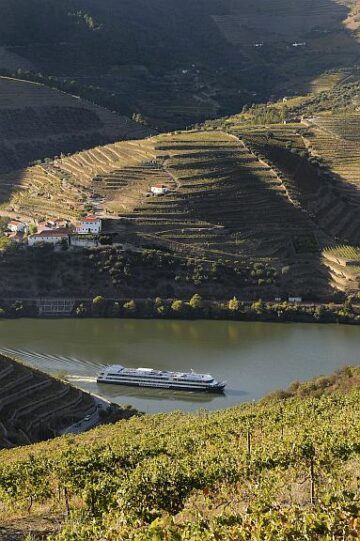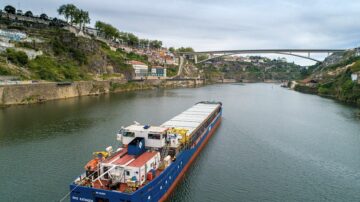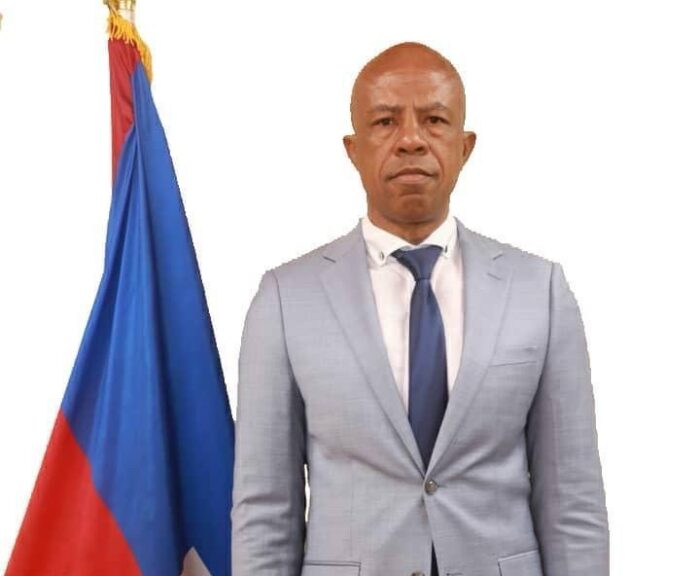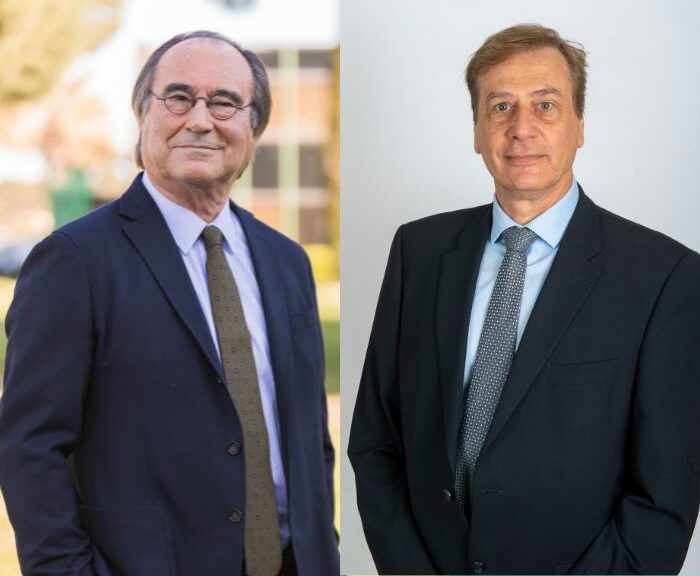The APDL – Administração dos Portos do Douro, Leixões e Viana do Castelo, SA – is also responsible for the Port of Leixões, Portugal’s second largest port by cargo throughput, for the port of Viana do Castelo and the waterways of the Douro River. The port of Leixões is a key economic and logistical engine for the country’s northern industrial region. The port territory is in both cases inserted in urban contexts, especially in municipality of Matosinhos and the metropolitan area of Porto. In this interview with President Nuno Araújo, we will learn about APDL’s commitment to the energy transition and decarbonization of the port.
The APDL is member of AIVP since 2018
AIVP – The decarbonization of port activities is one of your priorities and recently you announced an ambitious plan to be the first port with zero emissions by 2035. From what we could see in several communications, this plan will include a Road Map.
Can you explain us how you are preparing for this challenge and the main motivation and vectors of this strategy?
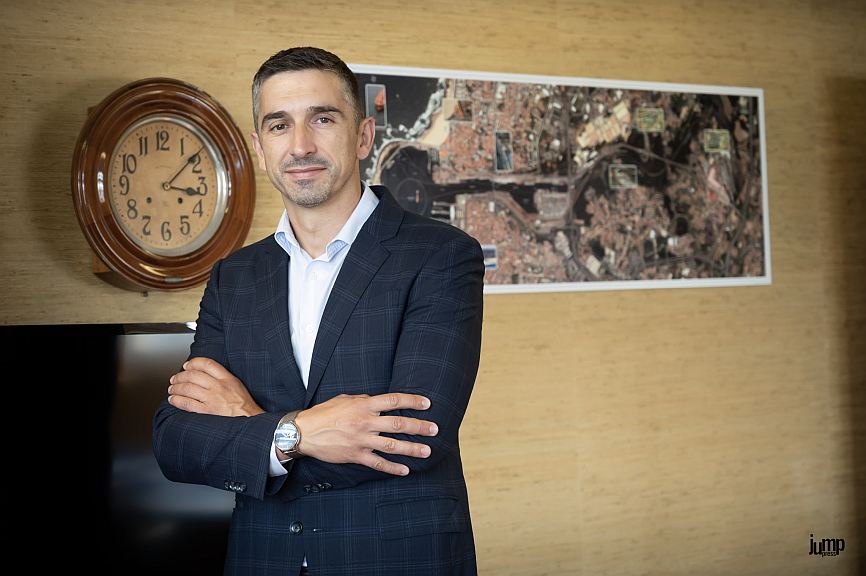
President of the APDL, Nuno Araújo – The Port of Leixões is surrounded by the city of Matosinhos, under urban pressure. Therefore, it is necessary to find a coexistence model based on the decarbonization of port activities, ensuring that they can continue in the current location and are compatible with the urban context. If we were not able to give a good answer to this challenge it would be a risk to our main mission, which is to serve the north-western peninsular region and its relevant industry hubs. Therefore, it was necessary to advance in the decarbonization of our activity, embracing the energy transition.
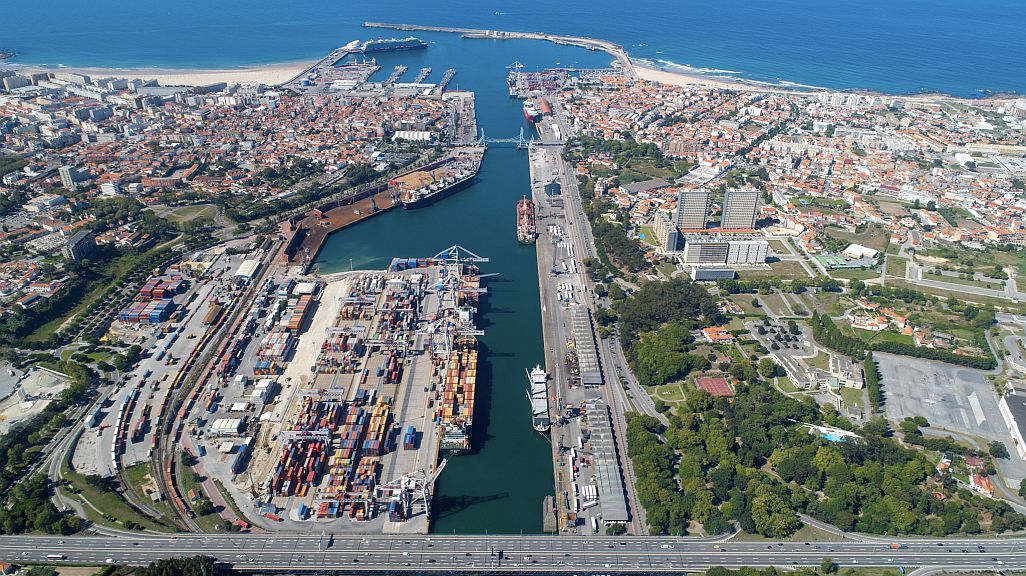
Port Authorities as leaders
If we use the word sustainability it must be in an honest way that really implies improvements. We must see how our investments contribute to the energy transition, helping us in the decarbonization. This is linked to remaining a competitive port and reducing our environmental footprint is connected to increasing our efficiency in logistical processes. And this has been our main strategy, to achieve positive environmental results, implementing planning, management, and technological solutions, that also contribute to the port and logistic efficiency. We believe port authorities must play a leading and active role, engaging with the port community and finding new partnerships.
Roadmap
The roadmap for the energy transition and decarbonization plan that we are currently developing with the assistance of external experts, has two main sections: diagnosis and action plan. The first one that we have already concluded, makes a global analysis of all our emissions and energy consumption, including the port infrastructure, our equipment, our operations and the road traffic and maritime activities. This diagnosis has been made as a joint effort, consulting with all stakeholders connected to the APDL.
The second part will be the action plan, including concrete measures, and the respective schedule. Here is where the APDL needs to be very active to achieve carbon neutrality by 2035. We are aware this is a very ambitious goal, since it implies anticipating carbon neutrality 15 years compared to other timelines. We know that we need to act on several fronts, leading the port community, changing the type of energy we consume to sustainable sources, developing multimodal logistic solutions in our hinterland, cooperating with the municipalities, efficiently managing the port territory, and reducing the impact of port mobility and operations.
AIVP – Can you give us some examples of these measures?
President of the APDL, Nuno Araújo – For example, we constantly look for ways to reduce the time it takes to manage the cargo. Reducing the time we take to handle a container, would also mean direct environmental gains, since the trucks would be less time in port. To do that, we need to simplify the bureaucratic procedures, coordinating with all the public authorities (phytosanitary control, customs, etc.) to find solutions that speed up the handling of cargo.
We are also working in new technology that will allow the digitalization of port activities, helping us to improve the traffic flow, better predict the arrival of cargo, prepare for potential disruptions, and avoid situations that could have repercussions for the city. This will be supported by the first public data centre of the country, that will also facilitate the implementation of other tools such as the digital map so that the truck driver can check the traffic in the port at that moment and the time it will take, allowing him to choose the time that suits him best.
Cooperation with the municipality
One example of the cooperation with the municipality of Matosinhos is the local voluntary carbon market. It is a pilot program from the municipality in collaboration with CEiiA (Centre of Engineering and Product Development) and the Ministry of Environment and Climate Action to encourage citizens and companies to implement behaviours to reduce the carbon footprint. Using the platform AYR, developed by CEiiA (with whom we also collaborate) will be possible to record and convert CO² savings into credits, that can be purchased by companies that aim to be carbon neutral, to offset emissions that they cannot eliminate in their activity. The revenue of these credits will contribute to green projects in the municipality, thus creating a circular economy around decarbonization. The APDL saw this as a great opportunity for a partnership and advance in our decarbonization plan.
AIVP – You also mentioned the area of sustainable mobility, which has been particularly prominent in recent months, showing its importance for the decarbonization of ports and the Port-City relationship.
Can you briefly explain to us how what kind of measures are you talking in this area and how was the dialogue with the different actors to reach a consensus?
President of the APDL, Nuno Araújo – In the port of Leixões about 1000 to 1500 trucks enter every day, that is about 450 thousand trucks every year, which release a total of 1.189 tons of CO² into the atmosphere. We are currently expanding the breakwater and will dredge the rotation basin, allowing a new terminal that will double the capacity of the port. Of course, this cannot mean doubling the number of polluting trucks. So, we decided to prepare several measures to avoid this impact.
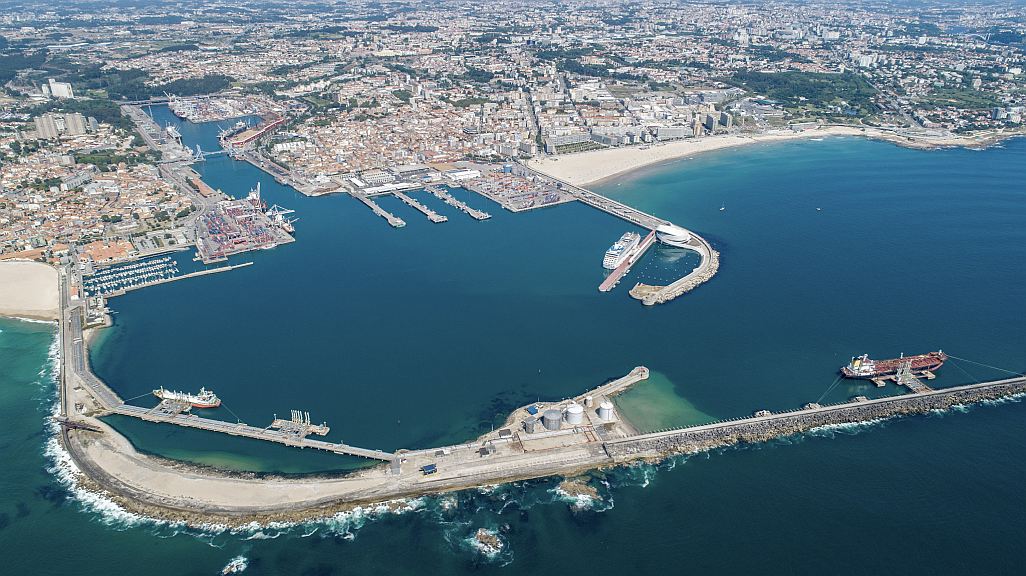
First, we decided in December 2020 to ban the entry of the most polluting trucks, those with designation EURO I, II, III and IV, which will represent a 50% decrease in pollution. This measure includes a 3-year transition period for the trucks registered in our database. This decision was taken in cooperation with the National Association of Public Road Carriers of Goods (ANTRAM), to guarantee a consensus. We had a positive dialogue since they intend to reduce their environmental impact. We signed a protocol to substantially reduce Greenhouse Gas emissions and increase cooperation between both organizations. Part of the agreement is a new working group, which will work during this first period to evaluate its implementation.
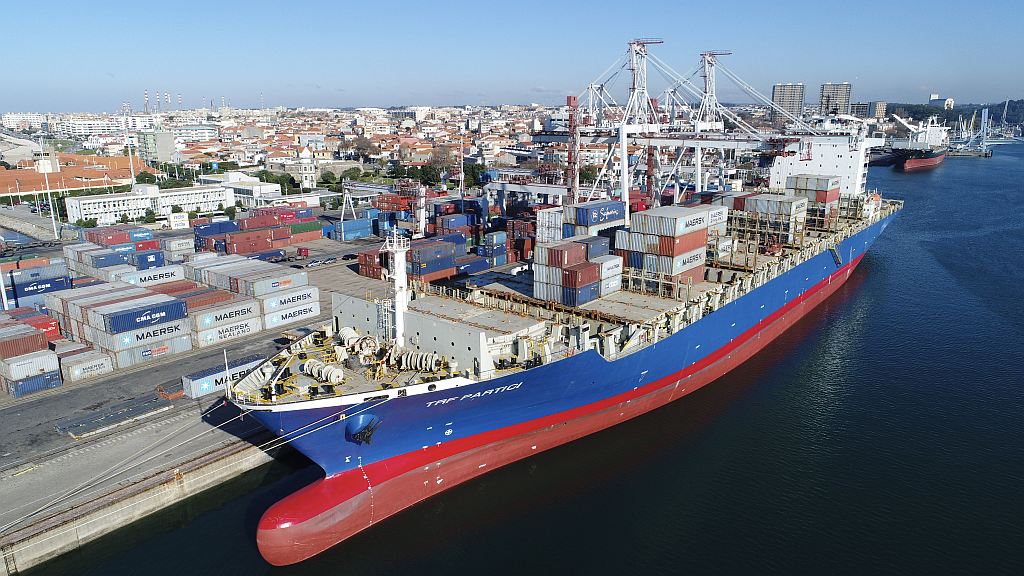
Additionally, since reducing the traffic is not enough, we also started to study different alternative solutions for road mobility. We decided to acquire the first electric truck for the port at the beginning of the year to see if it could be a solution and study its limitations. We want to set an example for the sector, as a state institution we are also responsible for promoting new solutions. This electric truck will be a test for our fleet (of 30 to 40 trucks) in charge of pendular movements between our terminals. We will assess its performance and discuss with the manufacturers if there are some limitations and in what way this truck could serve our purposes.
We have also introduced new measures for private vehicles from workers, banning them inside the terminals. In this case, we were addressing a triple problem: an environmental, security, and a port space issue. If there are 1000 vehicles entering the port territory every day and each occupies between 12 and 15 sqm., it means that they are using 15 000 sqm, that could be used for cargo. We started a dialogue with all involved parties, including the companies and unions, to find a solution to eliminate the additional 246 kg of CO² emissions they caused. We decided to allow only vehicles that are destined for maintenance operations and establish a shuttle for the port workers, offering a sustainable mobility solution. We also signed a cooperation agreement with all stakeholders to study the pedestrian access, parking areas and other mobility measures.
AIVP – Still related to the issue of mobility and sustainable logistics, you commented that some solutions involve intermodality and better connections with the hinterland. Can you explain these solutions and their impact?
President of the APDL, Nuno Araújo – The Port of Leixões relies mostly on road transport, that represented not long ago 95% of the goods movement, while the remaining 5% was on rail. To change this, we started several investments with the goal to increase the percentage of cargo and movement by rail, being able to double it in two or three years to 10%. Our goal in the coming years is to double it again.
Some of the actions to improve the rail logistic in our port includes an agreement with another public company to manage the IP road-rail terminal of Leixões that exists within the perimeter of the port, but it is not within the port itself. Currently, it separated by a physical barrier, forcing trucks to travel 18 km. when they are actually very close. This agreement will allow to double the capacity of the terminal, increase its efficiency by simplifying operations and reduce the environmental impact of this activity. Additionally, we are also connected to other key national investments, like the first dry port of Portugal, in Guarda, that will increase our hinterland, while reducing costs, making rail a commercially attractive alternative to trucks.
We also intend to increase the use of the Douro River waterway. Until now the Douro was used mostly for tourism activities, but this will change in the coming years. The reactivation of the mines in Moncorvo, in the interior of the country, will create new logistic demands. Of course, trucks could be an option, but they would generate many externalities, going against our decarbonization goal, and are only a solution for exceptional situations. Rail is a good alternative, but it has some limitations. We want to develop river infrastructure to guarantee a reliable and safe rive logistic service in this case. For this purpose, we are working to receive EU funding of 60 mill. € for two key investments, the widening of the Tua Canal and improving the locks. This would allow that tourism and cargo could coexist in the Douro.
AIVP – As you mentioned, one of the main challenges is connected to the energy consumption. Can you please explain us what the APDL is doing in this regard? And the innovative project being developed, for example in Viana do Castelo.
Nuno Araújo, President of the APDL – Despite the benefits of the measures related to limiting the circulation of vehicles, we need to go further, because the main part of the carbon footprint of the port comes from the maritime sector. To really make a difference, the APDL must be able to produce its own energy, research and manage new fuels, and eventually even sell them to the maritime sector. The port authorities must take an active role, being able to change the business to be able to make this environmental change as well.
In this sense, we believe Hydrogen will be the main clean fuel for the future and we are currently discussing future projects. But additionally, we are also working with several innovative companies in Viana do Castelo to produce wind and wave energy. This has been a positive example of cooperation, and we want to replicate in Leixões. But there is a dilemma that we need to solve in the discussion with the citizens and the municipality. For example, if we want to include windmills in the pier will the municipalities be ok with this? Or if we want to install one wave energy production unit in the breakwater of Douro, will they agree? So here is the dilemma, we want to have a green port, but then we also need to be able to produce green energy ourselves. To do that, we need the cooperation of the municipalities. But this is sometimes not easy, since there are concerns from a landscape perspective, that these solutions would not be attractive. We need to define our priorities and be clear, if we want to have a carbon neutral infrastructure, we need to see which are the solutions that are really possible.
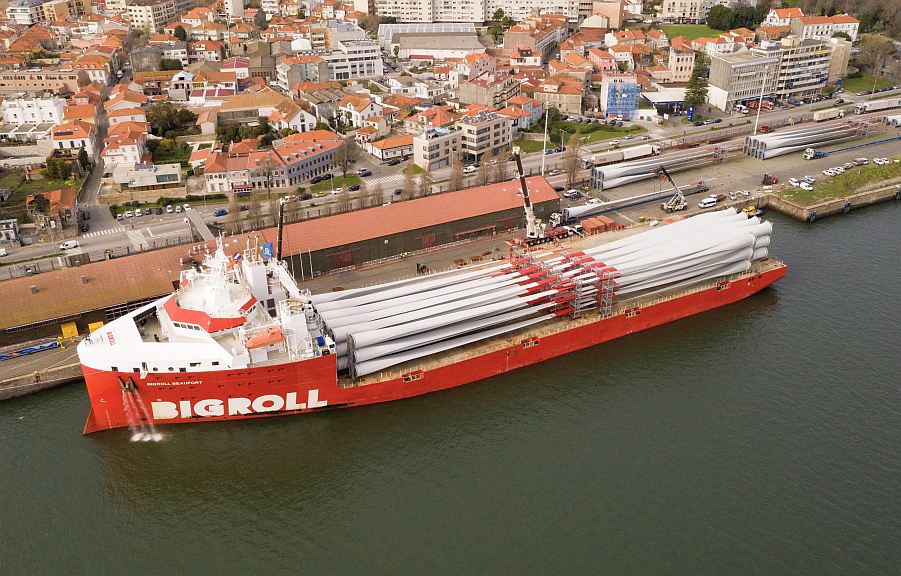
In Viana there are no conflicts of this kind. We, the port and the companies, have been very welcomed by the local actors. The innovation cluster has contributed to the development of the region and have found a good environment to test and develop new solutions. If it is not possible replicate this model in Leixões, we will reinforce our positioning in Viana and try to increase the installed capacity because it can greatly contribute to our decarbonization plan.
AIVP – Finally, in 2021 the APDL joined the UN Global Compact network, reinforcing its commitment to sustainability and the Sustainable Development Goals. Can you explain us what this affiliation means to the APDL and how you will evaluate its progression in the next years?
Nuno Araújo, President of the APDL – We are proud be the first Portuguese port to have joined the UN Global Compact Network, contributing with our role, on our own scale, applying the principles of the 2030 Agenda. Joining this initiative will gives us some guidance and help us assess our challenges and our development, following international standards and be more transparent. As I said if we are going to use the term “sustainable” we must be honest about it.
If we really want to be sustainable, we need to look at all our investments and measure them from an environmental perspective. That is why we have oriented all our strategy towards these two great aims, to be greener and more technological. The technology will help us make and accurate assessment, that will in itself also help us to motivate people, motivate teams, motivate our organization, demonstrating we are taking sustainability very seriously. In essence, the goal is being a green smart port, to be more environmentally friendly, more sustainable, and technologically more advanced. With technology as a driver, we will find ways to decrease our environmental footprint even more.

